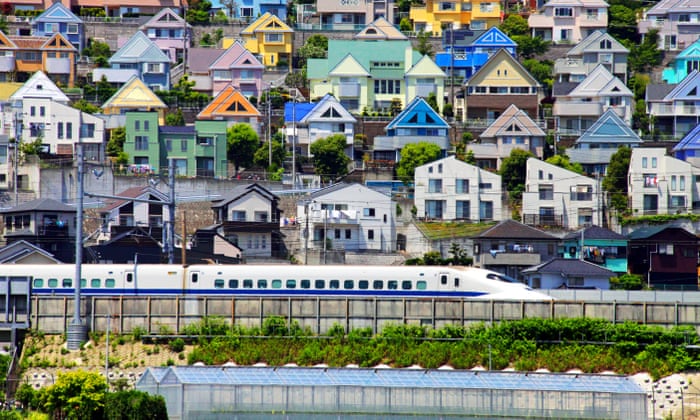Delve into the concerning situation where laws are posing a threat to low-cost housing options, risking the availability of affordable homes. Explore the implications of these laws on individuals and families who rely on affordable housing to meet their basic needs. Learn about the importance of preserving and advocating for accessible housing options to ensure a fair and sustainable society.
In the scramble for a cheap place to live, a divorced 55-year-old with a history of casual work in catering has few options. So Jill Edmonds went to live in a caravan park. Twenty years later, she can say it was one of the best decisions of her life. “It’s a mutual support group in these parks,” she told me. “Thanks to their neighbors, people can stay in their homes long after the time they’d normally have to go into aged care.”
Jill was once a home-owner. But the house was lost, and the family business, too, in unfortunate circumstances. After the separation from her husband, she had nowhere to go. “My mother kicked the bucket at the right time,” she says ruefully. With the modest proceeds from the sale of her mother’s unit, Jill funded the orthodontic work her children needed and invested $90,000 in a manufactured home delivered to a caravan park on the NSW central coast.
If such a move sounds desperate, think again. The caravan park option has provided rare access to affordable housing for thousands of people, especially retirees on low incomes, divorced men and women clutching half the proceeds of a house sale, and older single people. Around 72,690 Australians were living in caravans (or cabins or houseboats) in 2011, according to the Australian Bureau of Statistics.
With city rents spiraling at twice the rate of inflation, a massive lack of affordable rental accommodation, and about 173,000 people on public housing waiting lists, the caravan park has become a respectable, indeed desirable, option. Gentrification has brought changes in name and amenity – the caravan park is now more commonly called a residential park and caravans are giving way to manufactured or mobile homes. But unfortunately, this affordable style of living is under attack. Park owners, frequently big companies, are sick of being providers of low-cost housing and sick of the constraints on their ability to develop their sites and maximize profit. They’re waging a successful fight to change state laws that protect tenants’ security of tenure, and some also want a portion of the capital gain on the tenants’ houses when sold.
Such changes could render this affordable housing option unattractive, just as single, divorced and poorer baby boomers head into the retirement years. Many of these renters are wondering how they’ll survive in the future. I’ve written before about some of the housing alternatives: communal living, and urban hubs or villages. A study by Andrea Sharam of 111 single Australian women over 40 who are renters shows some could afford to buy a property worth $150,000. But where to find such a property? A residential park is a possibility; it’s a tried-and-tested alternative, and able it seems, to provide a communal lifestyle that might appeal to many in our generation.
If you’re imagining a 1960’s cramped caravan with annex, visualize instead a two-or three-bedroom manufactured home with parquet floors, and garden, selling from $120,000 with McMansions fetching up to $400,000. (Cashed-up baby boomers are moving in, too.) Mary Preston, 66, has lived in a residential park in western Sydney for 28 years. “We look after each other here,” she told me. “And it’s a magnificent lifestyle with pools, spas….more like resort living.” Jill Edmonds said, “We do shopping for the house-bound; one resident is almost blind, and if she locks herself out, all she has to do is call out and we’re there.”
It almost sounds idyllic. But the tenants, including long-time residents, Jill and Mary, have fought battles over years for security of tenure. In NSW, the country’s best protective legislation is under threat. The proposed law would turn the clock back a quarter of a century, the tenants say. Under the changes, it would be much easier for tenants to be evicted; alternative sites for their homes are very hard to find. As well, park owners would be able to get up to 50 percent of the capital gain on sales of homes or ten percent of the overall sale price.
It’s tricky for the government to strike a balance: between the freedom of park operators to develop the land they own, and the rights of the tenants with their significant investment in home and garden. Park owners claim they’re not making enough profits, and the industry isn’t viable. But some new operators see a bright future. They’ve moved in to buy up parks, and heavily market them as lifestyle options for the over 50s.
Affordable housing is one of the nation’s most critical issues; state governments must act judiciously to protect what we have left. Prime Minister Kevin Rudd, who started as a champion of the homeless, also needs to show that his commitment to affordable housing was more than a passing fad. Jill Edmonds sees a solution in resident co-operatives being helped to buy the land their houses and caravans stand on as happens in US mobile-home parks. She says it’s been a wonderful lifestyle. But if protections for tenants are weakened as proposed, she urges a new generation of divorcees and retirees to think carefully before following her lead.
What are your thoughts on this style of living? Are there other ways to help older renters? Please click on the ‘Comment.’
You may Also Like Australia's top verified coupon code at Adele Horin: Farfetch, Amazon, Marley Spoon, Domino’s, Esther & Co, Beachly, Plush, Shein, Hungry Jacks. Best Coffe Machines, Best Vacuum Cleaner, Best Air Purifiers, Best Carpet Cleaner.







